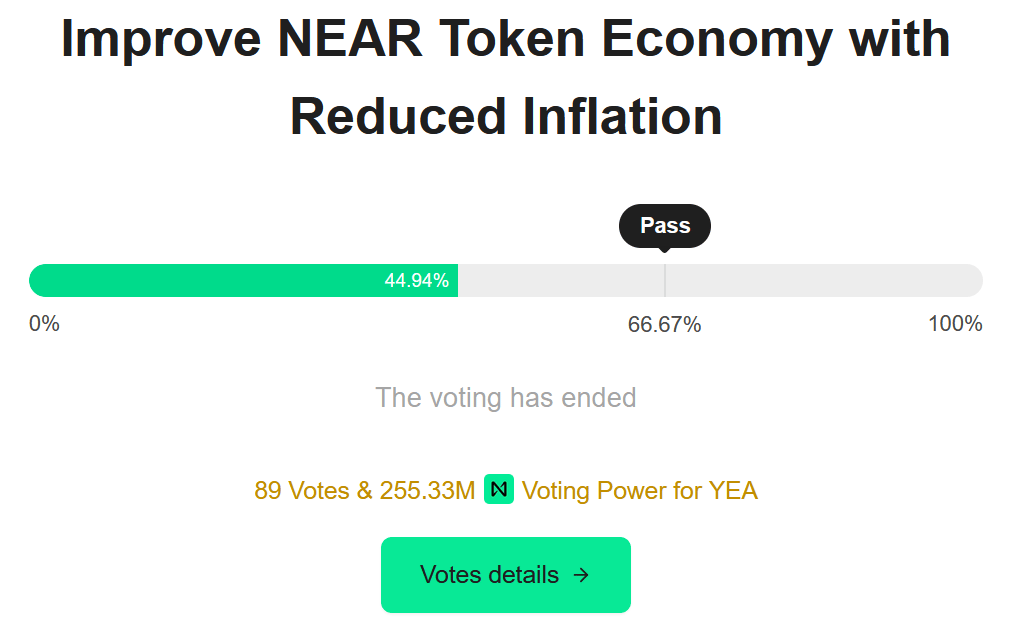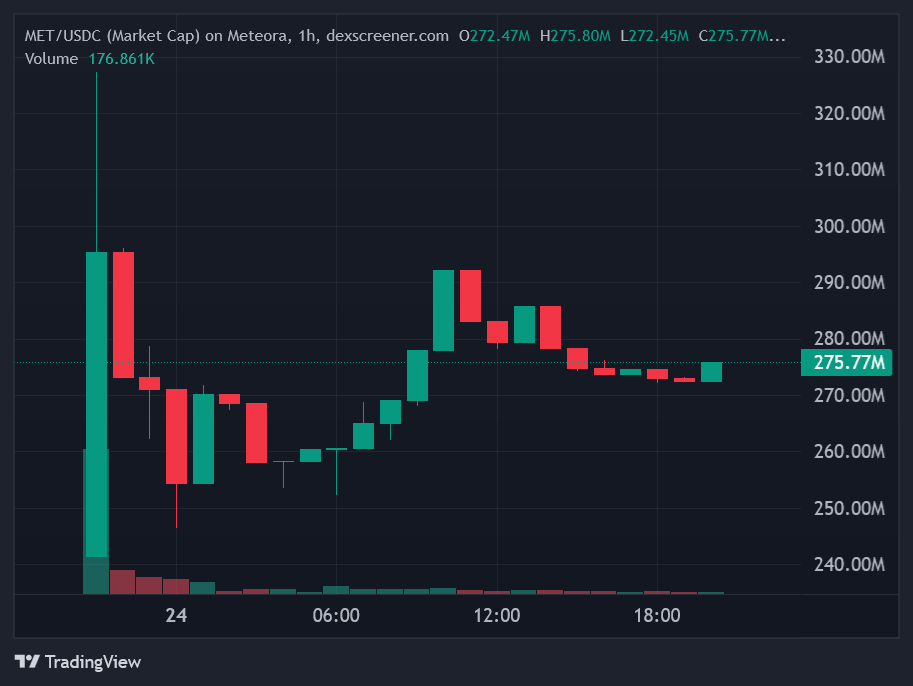- Lightspeed
- Posts
- 🚩 NEAR governance troubles
🚩 NEAR governance troubles
No solutions, only tradeoffs

Brought to you by:
hello
We’ve made it to the end of the week, everybody. Not that crypto sleeps on the weekend or anything. Just, you know, it’s nice to pretend we have boundaries until Sunday’s brunch gets disrupted by another volatility bungee jump.
NEAR governance troubles
The NEAR L1 blockchain is running into something of a governance debacle.
Since June, NEAR’s community has debated a proposal to halve protocol emissions from 5% to 2.5%.
The original proposal argues that fee burns have fallen well short of expectations, leaving “high inflation without high usage,” which is unsustainable.
The situation for NEAR is stark. NEAR is issuing roughly $140 million of tokens annually to secure a chain with $157 million in TVL and about $3.2 million in year-to-date fees.
For context, Solana’s estimated annual issuance is roughly $5.5 billion, but it supports a far larger, more active DeFi ecosystem with around $11 billion in TVL. From a purely economic lens, NEAR is definitely “overpaying” for security.
That discussion finally culminated in a vote that concluded earlier this week. But though the vote won a simple majority, it failed to clear the 66.67% approval threshold, leaving it technically unsuccessful under NEAR’s governance rules.

Source: Linearprotocol
That’s where the controversy begins. Validator operator Chorus One is criticizing indications that NEAR’s core contributors may still ship a nearcore release containing the change, relying on a subsequent onchain upgrade mechanism to activate it.
Despite this, the NEAR core team decided to proceed with implementing the inflation reduction in the next network upgrade, even though the governance process did not reach consensus.
— Chorus One (@ChorusOne)
2:49 PM • Oct 22, 2025
Louis Thomazeau of L1D fund is pushing back against Chorus One, countering that cutting emissions is “common sense” economics and should take precedence over blind adherence to decentralization ideals. In other words: Sure, there are rules, but a startup’s main job is not to die.
It’s hard to say if there’s a clear right or wrong here; it fundamentally comes down to your philosophical values.
Breaking the rules delivers short-term efficiency, but it risks a dangerous “Fed put” precedent. Following the rules of governance, I guess, safeguards governance integrity, but that’s costly for the network and NEAR in the near term.
Crypto seems to run into the same kinds of problems all the time.
Hyperliquid recently faced a similar bind.
In March, a trader squeezed the JELLY perps market, saddling the HLP vault with large losses. The team delisted JELLY perps and manually overrode the oracle price to close exposure and stem the damage — an explicit break from crypto’s sacrosanct “code is law” principle to protect depositors.
There are countless examples: Should a chain halt during an exploit (e.g., BNB in 2022)? Should a community hard fork to reverse a hack (Ethereum in 2016)? You get the idea.
If NEAR wants legitimacy, it should probably take the loss and honor its own thresholds. Forcing the outcome through for a “good” outcome today signals that your governance rules are written in sand. But then again, this industry has the memory of a goldfish, so who are we kidding?
Brought to you by:
Katana was built by answering a core question: What if a chain contributed revenue back into the ecosystem to drive growth and yield?
We direct revenue back to DeFi participants for consistently higher yields.
Katana is pioneering concepts like Productive TVL (the portion of assets are actually doing work), Chain Owned Liquidity (permanent liquidity owned by Katana to maintain stability), and VaultBridge (putting bridged assets to work generating extra yield for active participants).

One day out from MET’s debut:

A quick check in on the MET token, which debuted yesterday: After launching at a ~$327 million market cap, MET quickly dumped and has since stabilized at $275 million. An impressive testament to its community’s loyalty, considering MET debuted with a high circulation float of 48%.
To put that into perspective, MET is trading at a P/S ratio of 2.5, far lower than Raydium’s P/S of 8.
For everything Raydium, don’t miss Blockworks Advisory’s Raydium Token Holder Report Q3 2025.

